SOLAR CYCLE 25 ACTIVITY REPORT MAY 08_2024
X-CLASS SOLAR FLARE at early hours of May 08
The total number of sunspots has decreased to 144 of which 64 of them are grouped into 8 active regions as follows:
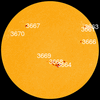
AR3662 is gone.
● Auroral Activity
Aurora Oval Bz: 1.43 nT North
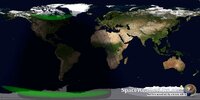
● Current Conditions at 04:46 UTC on May 08
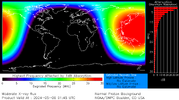
▪︎ Geospace quiet (Kp1)
▪Solar wind speed record: 472 km/sec (Elevated speed)
▪︎ density: 2 p/cm³ (low density)
▪︎ Interplanetary Magnetic Field (IMF)
Bt: 4 nT
▪︎ X-ray Solar Flare : X1 0145 UT May08
▪︎ Thermosphere Climate Index
today: Warm
▪︎ Neutron Counts today: -3.3% (Low)
▪︎ Sunspot number: 144 (SN 148 May 07)
▪︎ Spotless Days 2023 total: 0 days (0%)
▪︎ Solar wind flowing from a narrow coronal hole should reach Earth on May 8th.
............................
SpaceWeatherlive.com
SpaceWeather.com
X-CLASS SOLAR FLARE at early hours of May 08
Solar activity has been at high levels for the past 24 hours. The largest solar event of the period was a M8 event observed at 1630 UTC from Region 3663 (N25W57) the flare generated a Moderate R2 radio blackout over Central & North America
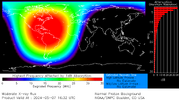
Other M-class flares
● M5.1 at 06:16 UTC from AR3663 the flare generated a Moderate R2 radio blackout over India region
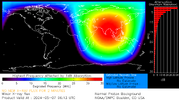
● M1.3 at 08:23 UTC from AR3664 the flare generated a Minor R1 radio blackout over Indian Ocean
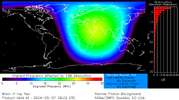
● M2.4 at 11:50 UTC from AR3664 the flare generated a Minor R1 radio blackout over West Africa
● M1.5 at 12:54 UTC from AR3663 the flare generated a Minor R1 radio blackout over West Africa
● M1 at 13:25 UTC from AR3663 the flare generated a Minor R1 radio blackout over West Africa
● M1 at 13:35 UTC from AR3664 the flare generated a Minor R1 radio blackout over West Africa
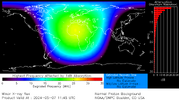
● M2.1 at 20:22 UTC from AR3664 the flare generated a Minor R1 radio blackout over East Pacific Ocean
● M3.3 at 21:26 UTC from AR3663 the flare generated a Minor R1 radio blackout over East Pacific Ocean
● M3.2 at 21:53 UTC from AR3663 the flare generated a Minor R1 radio blackout over East Pacific Ocean


Other M-class flares
● M5.1 at 06:16 UTC from AR3663 the flare generated a Moderate R2 radio blackout over India region

● M1.3 at 08:23 UTC from AR3664 the flare generated a Minor R1 radio blackout over Indian Ocean

● M2.4 at 11:50 UTC from AR3664 the flare generated a Minor R1 radio blackout over West Africa
● M1.5 at 12:54 UTC from AR3663 the flare generated a Minor R1 radio blackout over West Africa
● M1 at 13:25 UTC from AR3663 the flare generated a Minor R1 radio blackout over West Africa
● M1 at 13:35 UTC from AR3664 the flare generated a Minor R1 radio blackout over West Africa

● M2.1 at 20:22 UTC from AR3664 the flare generated a Minor R1 radio blackout over East Pacific Ocean
● M3.3 at 21:26 UTC from AR3663 the flare generated a Minor R1 radio blackout over East Pacific Ocean
● M3.2 at 21:53 UTC from AR3663 the flare generated a Minor R1 radio blackout over East Pacific Ocean

Looking at "the electrical installation" of these 2 regions we have in front of The Earth. AR3663 & AR3664
The total number of sunspots has decreased to 144 of which 64 of them are grouped into 8 active regions as follows:
| Active Region | Sunspots | Size (MH) |
| AR3661 | 1 | 10 |
| AR3663 | 15 | 400 Byd |
| AR3664 | 37 | 630 Byd |
| AR3666 | 2 | 80 |
| AR3667 | 1 | 150 |
| AR3668 | 6 | 30 |
| AR3669 | 1 | 10 |
| AR3670 | 1 | 40 |

AR3662 is gone.
AR3663 & AR3664 have beta-gamma-delta-class magnetic field that harbors energy for strong X-class flares. AR3664 has grown in size reaching 630MH
THE CHANCE OF FLARES JUST DOUBLED:
There are now two dangerous sunspots facing Earth. In the past 48 hours, AR3664 has more than doubled in size, becoming one of the largest sunspots of the current solar cycle. It is inset in this magnetic map of the sun from NASA's Solar Dynamics Observatory:
Among the sunspot's dark cores, magnetic poles of opposite polarity are bumping together in explosive proximity. As a result, AR3664 now poses a threat for X-flares like its more active cousin AR3663 in the northern hemisphere. SpaceWeather.com
NOAA's forecast for the next 24 hours: 99% chance of C flares, 90% chance of M flares and 50% chance of X flares.
● Auroral Activity
The geomagnetic field has been at quiet for the past 24 hours. On May 07 Solar wind speed reached a peak of 602 km/s (high speed) at 01:50 UTC Total IMF reached 6 nT at 21:53 UTC
Aurora Oval Bz: 1.43 nT North

● Current Conditions at 04:46 UTC on May 08
Geomagnetic activity is at Kp 1 index (quiet) The solar wind has a elevated speed of 472 km/s pointing north with positive Bz value of 1.43 that offers low conditions for aurora sightings at high latitudes.
X-FLARE CHAMPION OF SOLAR CYCLE 25: Active sunspot AR3663 produced another X-flare today, an X1.0 category blast on May 8th (0145 UT). This makes it the most active sunspot of Solar Cycle 25 so far. Since May 3rd, the active region has tallied five X-flares, more than any other sunspot in the past 7 years. It may continue to run up the score as it approaches the sun's western limb later this week. SpaceWeather.com
The X flare generated a Strong R3 radio blackout over Western Pacific Ocean

On May 08 Solar activity is likely to be moderate with a chance for an X-class flare while the geomagnetic field is expected to be at quiet to unsettled levels
▪︎ Geospace quiet (Kp1)
▪Solar wind speed record: 472 km/sec (Elevated speed)
▪︎ density: 2 p/cm³ (low density)
▪︎ Interplanetary Magnetic Field (IMF)
Bt: 4 nT
▪︎ X-ray Solar Flare : X1 0145 UT May08
▪︎ Thermosphere Climate Index
today: Warm
▪︎ Neutron Counts today: -3.3% (Low)
▪︎ Sunspot number: 144 (SN 148 May 07)
▪︎ Spotless Days 2023 total: 0 days (0%)
▪︎ Solar wind flowing from a narrow coronal hole should reach Earth on May 8th.
............................
SpaceWeatherlive.com
SpaceWeather.com

